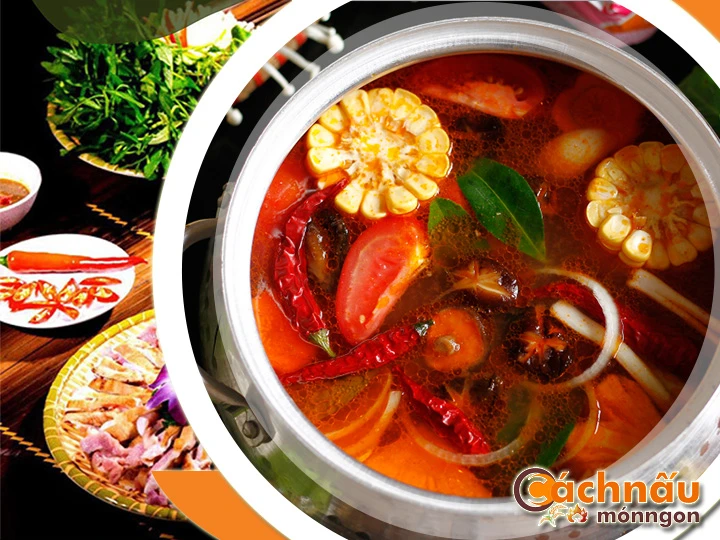This comprehensive guide explores every detail you need to realize about rabbit hot pot, from its old-world roots to updated recipes, health advantages, and easy-to-follow steps for creating the excellent dining option at home. Whether you are a veteran chef or a cooking enthusiast, this guide will encourage and guide you to excel in the technique of rabbit hot pot.

THE CHRONICLES ALONG WITH TRADITIONS CENTERED AROUND HEARTY RABBIT MEAL.
Rabbit hot pot is a one-of-a-kind and traditional dish with deep heritage in diverse locales. Its appeal stems not only from its savory flavor but also from its legacy and traditions.
1. Understanding the Past centered around Rabbit-inspired delicacy.
- Historical Roots: Rabbit hot pot was created in villages where small game were a popular, protein-rich food source. In traditional Chinese culture, it was a loved recipe, particularly during special occasions.
- Widely Popularized: In the West like Belgium, rabbit was historically prepared in savory recipes, transforming into modern versions of hot pot as the dish gained global appeal.
2. Rabbit Stew in Eastern Heritage.
- In China: Known as the traditional rabbit hot pot, rabbit hot pot is celebrated in Sichuan-style cooking, recognized for its robust flavors and loved during family gatherings.
- In Korea and Japan: While less prevalent, rabbit hot pot is occasionally prepared as a healing cuisine in South Korea, or drawing influence from Japan’s nabemono-style cooking in Japanese cuisine, featuring local vegetables and spices.
- Throughout Vietnam: Although rabbit hot pot is uncommon in everyday meals, it is well-known during unique moments or in remote locations where rabbit meat is plentiful. It is often enhanced by distinctive spices such as fresh lemongrass, spicy ginger, and hot chili, paired with fresh vegetables like swamp cabbage, spicy greens, or mimosa vegetables. This dish is cherished for its exceptional taste and nutritional richness, frequently served at special moments with close ones.
Ở vùng đất Việt Nam, tuy không thể xem là món ăn phổ biến đều đặn mỗi ngày, nhưng nổi tiếng trong những ngày lễ lớn hoặc ở các vùng xa xôi, nơi thịt thỏ được tìm thấy nhiều. Thường được tẩm ướp với hương liệu như sả, hương vị gừng, và ớt, kết hợp với rau nhút. Món ăn này rất được ưa chuộng nhờ hương vị độc đáo và tính bổ dưỡng, thường các buổi gặp gỡ bạn bè.
3. Stewed Rabbit integral to Western Food Culture.
- Throughout France: Often prepared as a warming meal with a red wine base, aromatic herbs including rosemary, and root vegetables. Rabbit hot pot is a classic dish for holiday meals.
- Within Italy: The dish known as “Cacciatore”, featuring rabbit prepared with a tomato and wine base, is a early version of rabbit-based hot pots.
MASTERING RABBIT HOT POT: RECIPES AND METHODS
Rabbit hot pot is a adaptable dish that combines natural components, savory broths, and unique cooking techniques to create a rich and flavorful experience. Below are essential tips into the core recipes and techniques to excel in rabbit hot pot.
Basic Recipe for Rabbit Hot Pot
* Ingredients:
- 1 whole rabbit (chopped into parts)
- 4 cups of broth (chicken)
- Vegetables (carrots)
- Spices and herbs (garlic)
- Seasonings (soy sauce)
- Optional: side dishes for serving
* Steps:
- Prepare the Rabbit: Clean and chop the rabbit into pieces. Season with salt, pepper, and a splash of soy sauce for 30 minutes to boost the flavor.
- Prepare the Broth: Heat a pot with a small amount of oil. Sauté minced garlic and sliced ginger until fragrant. Add your selected stock and bring it to a boil.
- Simmer the Rabbit: Add the rabbit pieces into the pot and let them cook slowly on low heat for 30-40 minutes until soft.
- Add Vegetables: Add your chosen vegetables and cook until they are softened but still fresh-looking.
- Plate Up: Transfer the hot pot to a large bowl. Serve with accompaniments and add-ons such as rice or noodles.
Mastering Rabbit Hot Pot Techniques
- Flavor Enhancement:
. Marinate the rabbit with a combination of salt, pepper, and spices to amplify its base flavor.
. For more depth, use wine, soy sauce, or a mix of herbs like rosemary and thyme.
- Layering Ingredients:
. Start by boiling the rabbit in the broth to draw out its savory taste.
. Introduce vegetables step by step based on their cooking times.
- Cooking Time:
. Avoid cooking too long the rabbit, as it can become tough.
. Test for readiness by checking if the meat is fork-tender.
- Flavor Enhancements:
. Perfect the flavor by adding additional seasonings as needed.
. Experiment with different types of broths, such as spicy Sichuan-style variations.
Tips for Success
- Quality Matters: Always choose fresh rabbit meat and in-season greens for the highest quality.
- Taste and lẩu thỏ đúng điệu Adjust: Be mindful of the sweetness in the broth. Taste and refine frequently during cooking.
- Sauce Pairings: Offer a range of sauces like garlic-chili oil or soy-based dips to enhance the dining experience.
- Visual Appeal: Use a tabletop cooker or serve the hot pot at the center of the table to foster interaction.
With mastery of these recipes and techniques, you can prepare a rabbit hot pot that’s delicious and attractive, ensuring it becomes a highlight for any dining experience or event.